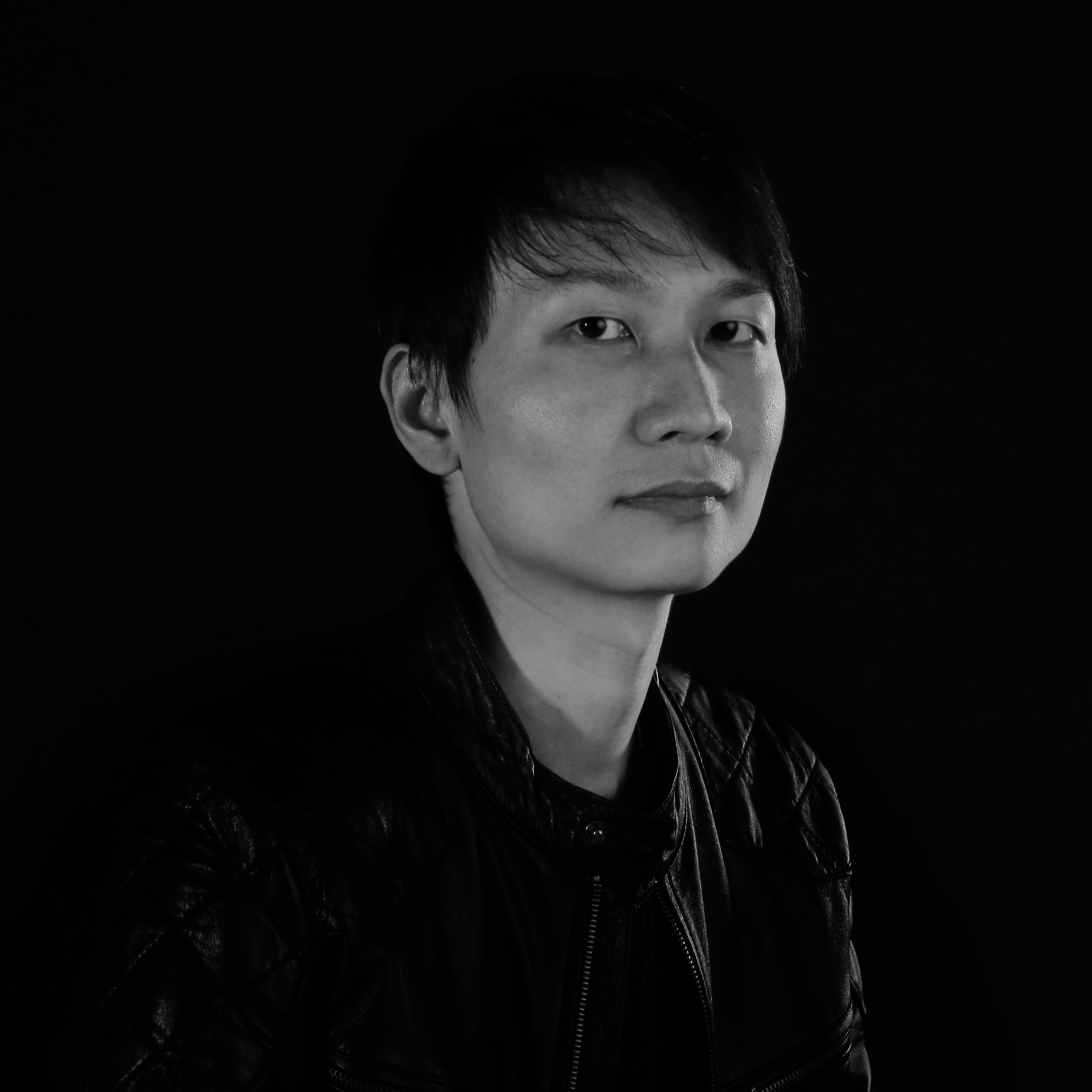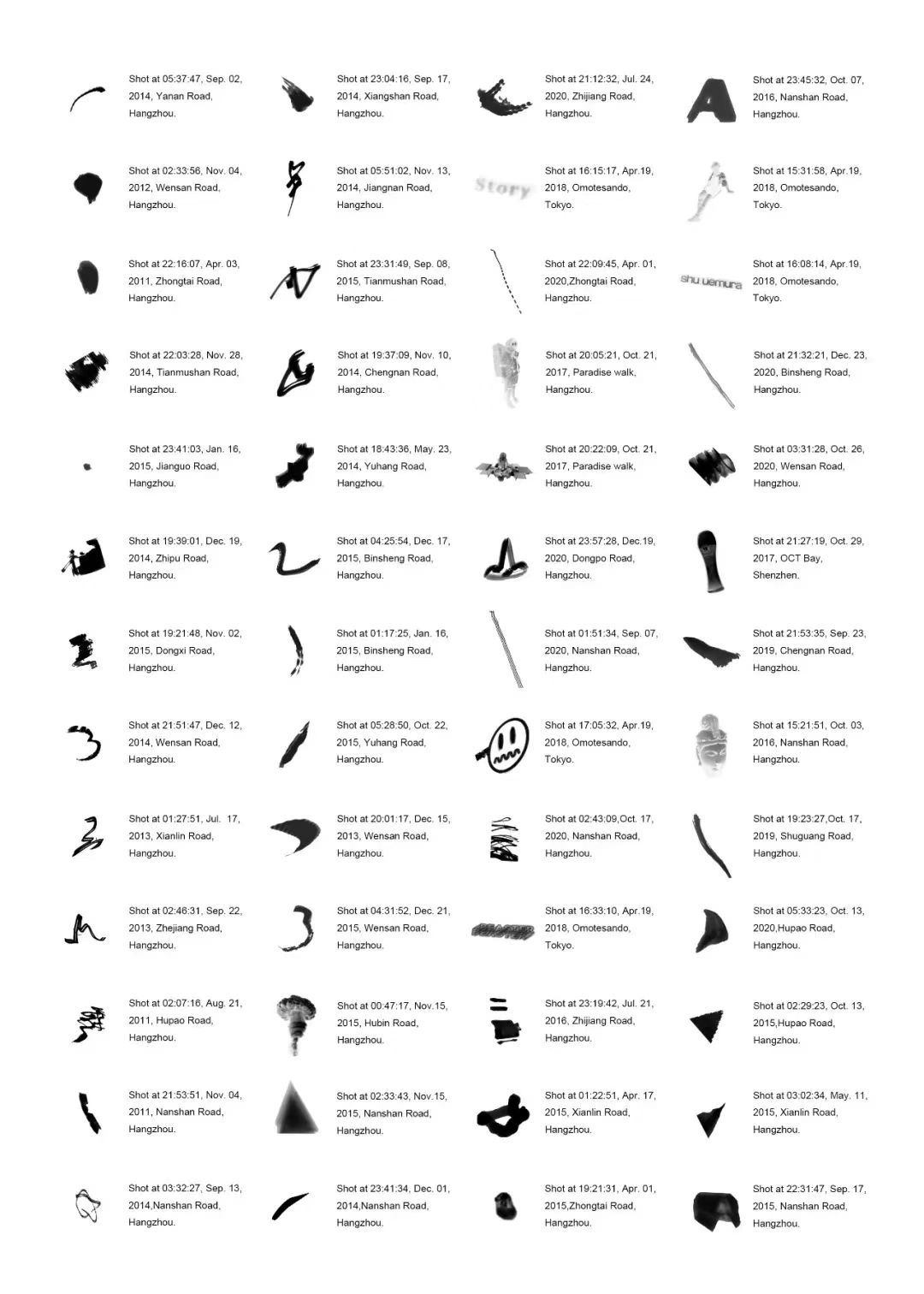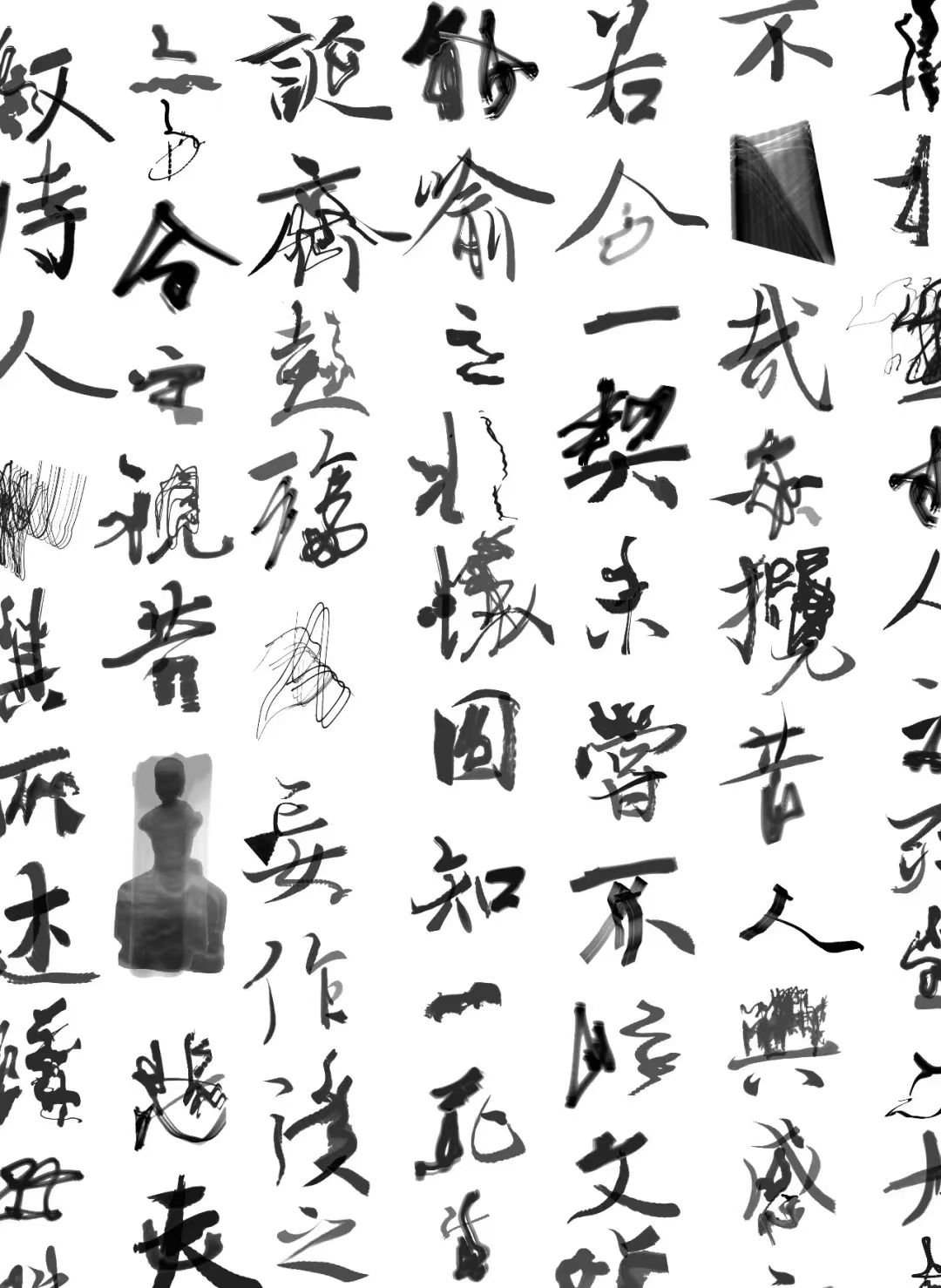Li Shun: Life is like a dream, fleeting | BCAF New Voice
NEW VOICE
Supporting Young Talent, Sharing Voices for New Dreams
40 potential newcomers in the top 10 creative fields are nominated by 40 Recommender.
The third season of ‘New Voice – A Programme to Promote New Chinese Contemporary Artists’, jointly initiated by the Beijing Contemporary Art Foundation, Caixin Audio-Visual and Caixin Creative, aims to support young talent and share a common dream for the new.
We have invited experts from the fields of art, design, film, architecture, ideas, literary publishing, dance, theatre, music, aesthetic education and other fields to recommend the young creators they are most focused on. They may stand out for their whimsical ideas or bold breakthroughs, or they may have an exceptional sharpness and wisdom, or they may highlight a certain texture that is rare in the present day. Their growth paths and individual choices can also reflect the characteristics of the times. Their pioneering, original, and individual characteristics represent the concept of BCAF's consistent support for authentic expression of ideas and a space for diverse dialogue.
Emerging creators will receive promotional cooperation from BCAF and Caixin Media channels and online media, as well as priority access to international exchange, creative funding, and artistic residency opportunities.
In-depth interview articles and short documentaries on the 10 emerging creators from the third season will be released every Friday from 14:00 starting from March 22, 2024.
NEW VOICE Season 3, Episode 10 |
Li Shun (young artist)
New Voice Recommender
Zheng Ziyu
Curator, Associate Professor at the School of Journalism and Communication at Sun Yat-sen University

Recommendation:
Li Shun is an intuitive, quick-witted artist who has opened up an evolving and expanding vein in his interdisciplinary creations that depart from photography. He almost instinctively rebels against the essentialised attributes of photography such as ‘clarity’, ‘realism’ and the ‘decisive moment’. From the abstract brushstrokes, to the famous calligraphy in the series ‘Gezhi Zhi Zhi’, and then to the intricate hand-painting in the series ‘Internet Sketches’, he uses light as a brush and traces light with the brush, capturing ‘ink marks’ in time and fleeting movement, creating a rational order unique to him in the midst of absolute chance.

▲ NEW VOICE Season 3, Episode 10 | Li Shun
At night, Li Shun sees the neon lights of the city and the blue light from phones and computers. He stays up late at night, like many of us, absorbing information through screens and expressing his emotions with a snap of his phone. But his art makes him aware of, watchful of, and suspicious of all this.
Li Shun grew up with his grandparents. His grandfather had studied at a private school and lived like a traditional Chinese scholar. Li Shun was immersed in this world as a child. He wanted to study Chinese literature but couldn't. He wanted to study Chinese literature but couldn't. Instead, he enrolled in a cross-media programme at the China Academy of Art on the banks of the West Lake.
Everything seems perfect. Li Shun didn't use traditional techniques. His work is anti-traditional. The cross-media major must understand the media of this era.
He likes things that glow in the dark. In his third year, Li Shun borrowed two cameras from the department and installed them in his car, pointing at the windscreen. He took photos at night in Hangzhou. He scanned the negatives and the night became white. The light traces were like ink strokes, and the photos of the windows formed a group. Once the work was done, he saw writing in the ink of the light and started to collect light trails. He sorted out images with Chinese calligraphy strokes and radicals and used them to make historical name cards. Each card has a list of where and when the strokes were taken.
▲ The foundation of our existence is nothing other than the ever-diminishing reality. 5-6, photography, fine art inkjet print on museum-grade photo paper, 100 x 100 cm x 2, 2009
 ▲The image is filtered to sort out elements similar to Chinese calligraphy strokes and radicals.
▲The image is filtered to sort out elements similar to Chinese calligraphy strokes and radicals. ▲Knowledge comes from investigating things—manuscript of an oration for a deceased nephew (detail)
▲Knowledge comes from investigating things—manuscript of an oration for a deceased nephew (detail) ▲Knowledge comes from investigating things—manuscript of an oration for a deceased nephew (extract)
▲Knowledge comes from investigating things—manuscript of an oration for a deceased nephew (extract)Li Shun doesn't set out to follow tradition. His work challenges traditional art education. What are we trying to keep alive? Is it the look? He used a computer to turn portraits of famous people into negatives. Then he copied them in a sketch. He used a large-format black-and-white film to photograph the sketch and painting, creating a positive image negative. He thinks realistic painting was at its best during the Renaissance. This was when painting was used for religion and depicted gods and heroes. But photography made realism and brushwork less creative.
His later works, such as 'Sea Surface' and 'Sketches from the Internet', explore the boundaries between virtual and real. Li Shun's work shows the cycle of human culture and the changing nature of reality and illusion.
Before his solo exhibition in Los Angeles, he used Google Street View to find images of Los Angeles, took screenshots, used a digital camera to take a picture of the computer screen, and then sketched a live sketch against the photographed photo. He used this method to create a lot of work during the pandemic. He used Google Street View to visit natural landscapes, local customs and famous art galleries and museums. He translated them through his own art form, called 'Internet sketching'.
But all these things are fleeting. The fleeting moment is the eternal truth of mankind.
▲ Artist Li Shun
▲Knowledge comes from observing things closely – a fleeting glimpse of light, photography, hand-made art print on rice paper, 99×99cm, 2023
▲Gwuzhi Zhi Zhi - The Mountain Left Behind, photography, hand-made art print on rice paper, 117.5 cm x 231.5 cm, 2023
Quick Q&A
Q: What do you think is the most urgent social change that needs to be made?
A: Human society is a very broad topic, but in terms of my immediate surroundings, I think it is important to be able to think independently.
Q: Can your occupation help change this situation?
A: Yes, although it is very limited.
Q: What personal situation would you most like to change?
A: To become a global citizen.
Q: What is your main source of external information?
A: The internet.
Q: What shocks and shortcomings were there in your childhood?
A: I don't know.
Q: Apart from artistic creation, what do you spend the most time on?
A: Sleeping.
Q: What was the first thing you did to earn money?
A: I handed out flyers in junior high school, but the first time I started earning money properly was when I opened a studio in university and worked there for a few years.
Q: To what extent is your current occupation a means of earning a living? If you didn't have to consider earning a living, how would your creation/work be different from what it is now?
A: I earn a living from my occupation, but I didn't choose this occupation just to earn a living. It just so happens that I like this occupation and it can earn me a living.
Q: What are you most happy about this year?
A: I have moved to a new home.
Q: As an artist, what are the three qualities you value most?
A: Timeliness, criticism and irreplaceability.
Q: Who has had the greatest influence on your career?
A: The person who guided me to get into the China Academy of Art.
#01
‘Writing should follow the times.’
B: Your name is Li Shun. Is it a coincidence that your earliest works that formed your personal style captured the moment of light to form an ink-like form?
Li Shun: My grandfather gave me this name. It actually comes from Shun, one of the Three Emperors and Five Emperors. I seem to have cousins named Li Yao and Li Yu.
B: Why did you choose to major in transmedia?
Li Shun: When I went to university, it wasn't called cross-media yet, it was called new media. Actually, I just wanted to apply to the Nanshan campus of the China Academy of Art, which is very close to the West Lake, separated by just one road, Nanshan Road. I liked the grand entrance to the campus, and the new media department was located there.
B: What is the current series of work you are working on?
Li Shun: It's a continuation of light and shadow ink painting. In the past, I used light and shadow to create calligraphy, and recently I've been working on ‘Traveling in the Mountains and Streams’, a practice of light and shadow in landscape painting.
B: You use your phone, computer and camera to show the beauty of traditional calligraphy and painting. Do you usually practise traditional calligraphy and painting with ink, brush and paper?
Li Shun: I actually create in a context that is anti-traditional ink and brush. These traditional writing media have gradually become alien to our current lives. When I was a child, my family tried to get me to practise calligraphy with a brush, but it failed. I still can't write well, and I sign my name in pinyin. But that's good, it's internationally recognised.
The three major running scripts are Wang Xizhi's ‘Lanting Preface’, Yan Zhenqing's ‘Jizhi Wengao’ and Su Shi's ‘Hanshi Tie’. The ‘Lanting Preface’ is a travelogue written by Wang Xizhi and his aristocratic friends after a drunken night under the Kuaiji Mountain in Shaoxing. The ‘Hanshi Tie’ is Su Shi's impromptu lament on life after being demoted to Huangzhou and feeling depressed and frustrated. A while ago, a friend of mine went to Hangzhou to see Jay Chou's concert, but it rained heavily. He used his mobile phone to record a video and posted it on social media to express his dissatisfaction. Why didn't he use a brush and paper to record it?
Brush, ink and paper were all extensions of the body in ancient times, just as our modern-day mobile phones, computers and cameras are extensions of our body. What we need to inherit is the spirit of traditional Chinese literati art. The physical skills need to be inherited, but they also need to be developed and related to this era.
Wang Xizhi, Yan Zhenqing and Su Dongpo were not so-called professional calligraphers. Wang Xizhi was born into the Wang family of Langya, and Sima and Wang ruled the world together; Yan Zhenqing was the senior statesman of the day; and Su Dongpo was a great literary figure and politician of the Northern Song Dynasty. The so-called effort is outside the painting. The reason why Yan's style is vigorous and powerful is because he had the breadth of mind to shoulder the responsibility of righteousness and embrace the world when the country was broken and the family was ruined. ‘Jizhiwen’ (A Memorial to My Nephew) was written in one go by Yan Luguo when he was overcome with grief at the death of his relatives in battle. The rhythm of the words changes with the mood, regardless of skill or clumsiness, and there are corrections and additions all over the place. The composition is natural and unrestrained, completely dictated by emotion, which gives it a huge scope for the imagination. But today's calligraphers who seek out the phrases and sentences to copy these circles and strokes are open to question, putting the cart before the horse. Furthermore, times have changed. The ideology of an era determines the art form of that era. Our familiarity with brushes and ink does not reach the level of the ancients, just as the ancients had never seen a camera or a computer.
B: Literati painting also has its own era. In the constant switching between the contemporary and the traditional, which part of traditional Chinese art do you think is still being carried forward today? Today, many people still use ink, brush, paper and inkstone to paint literati paintings. What do you think is the difference between them?
Li Shun: In fact, every era emphasises innovation and breakthrough. In my opinion, the main difference between professional artists and art lovers lies in whether your creation is contemporary, critical and unique.
Shi Tao once wrote, ‘The features of the ancients cannot be found in my face, and the thoughts of the ancients cannot be found in my heart.’ Wu Guanzhong also said, ‘Brushwork should follow the times.’ We not only need to inherit tradition, but also develop it and relate it to our lives and times.
#02
View thousands of miles without leaving home
B: In addition to using cursive script to express contemporary light and shadow and geography, you also updated the elegance of the traditional literati ‘travelling while lying down’ during the pandemic quarantine. ‘Talking about what you see from this picture, lying down and travelling for a lifetime is still enjoyable’ is similar to the mentality of modern people using the Internet to appreciate pictures and travel the world, but you used a very complicated process to express it. Now that the pandemic period is over, looking back, what changes do you think this complex creative method or this series of works have brought to your ideas and work?
Li Shun: Internet sketching actually began in early 2019. At the time, I was going to Los Angeles for an exhibition. I had never been to Los Angeles before, but I wanted to do some related work, so I used Google Maps to find natural scenes in Los Angeles. At first, this was just how I got to know the place. I took screenshots, remade them on the computer, painted them in negative on various texts, and then remade them in positive using large-format negatives. It was indeed a very complex translation, and after the translation, we see that it is no longer the original thing.
Not long after I started this way of creating, the pandemic of 2020 struck. In 2019, I was still travelling around the world, and I went to Los Angeles twice that year. I went skiing in Hokkaido a month before the pandemic began, and after the Chinese New Year in 2020, I was unable to leave my room. But when it comes to how we should view the world in the post-pandemic era, I choose the internet, so I can view thousands of miles without leaving home. The ancient Chinese were in a similar situation. For example, ‘(Zong Bing) fell ill and returned to Jiangling. He sighed and said, ‘With old age and illness upon me, I fear I will never be able to see all the famous mountains. I will just contemplate the Dao and travel while lying down. ’He mapped all the places he visited in his room.
 ▲ Internet sketch – Blowin' in the Wind – “1984”, sketch on the page of the novel 1984, collectible art micro-spray, 8x10 inch black and white negative, platinum process photo paper, 185x330cm, 60x42cm, 76x110cm, 25.4x20.32cm, 28x35.5cm, unique edition, 2020
▲ Internet sketch – Blowin' in the Wind – “1984”, sketch on the page of the novel 1984, collectible art micro-spray, 8x10 inch black and white negative, platinum process photo paper, 185x330cm, 60x42cm, 76x110cm, 25.4x20.32cm, 28x35.5cm, unique edition, 2020B: In your Internet sketch, you chose the books 1984, Brave New World and Animal Farm as a basis because the worldview they embody is consistent with your own, or was it just to immerse yourself in the series?
Li Shun: People who can think independently will live in 1984; those who cannot will live in Brave New World; but we are all living in Animal Farm.
#03
Life is like a dream, fleeting in an instant.
B: Your creations revolve around ‘light’. There is a view that our world is virtual and only light is real. What is your view on the logic of the world's operation?
Li Shun: I have always believed that the world is virtual. If it were real, there would definitely be a creator. If our world is virtual, then so is light.
The reason I am used to creating with light is closely related to my personal life. I am particularly sensitive to fleeting things. It's like when we pass strangers in the morning and evening rush hours in the subway, or the brief encounters and farewells from elementary school to university, one time, one meeting, fleeting. ‘Everything comes from feelings, and the heart knows without doubt.’ As an artist, I am particularly sensitive to these feelings, and this has become my artistic expression. During my junior year, I used two cameras to capture long-exposure light and shadow at the front and rear of the car, compressing the constantly advancing and retreating light and shadow into a flat image. I named this work after a quote from Schopenhauer: ‘The only thing we have to live for is the fact that we are living, and that we are living it.’ It is a kind of passing of time and the emptiness of existence.
This fleeting moment is my life itself.

▲ We exist on a foundation of nothing but the ever-diminishing reality, dual-screen high-definition 4K video, black and white, 356 x 200 cm, 136'23’, 2021
*The above pictures were provided by the interviewee
Written and compiled by Yue Yan
Edited by Studio Comfibo